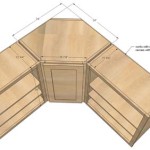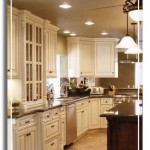Essential Steps for Painting Over Stained Kitchen Cabinets
Revitalizing your kitchen cabinets with a fresh coat of paint can transform the entire space, but tackling stained cabinets requires proper preparation and execution. Here's a comprehensive guide to help you achieve a flawless finish.
1. Preparation is Key
Begin by thoroughly cleaning the cabinets with a degreaser to remove dirt, grease, and grime. Sand any rough edges or imperfections with fine-grit sandpaper, and remove all sanding residue.
2. Protect Your Surfaces
Cover your countertops, floors, and walls with drop cloths to prevent paint splatters. Use painter's tape to mask off any areas you don't want painted, such as hardware.
3. Prime the Cabinets
Applying a primer is crucial for sealing the stains and creating a smooth surface for the paint to adhere to. Choose a primer specifically designed for stained or painted cabinetry.
4. Choose the Right Paint
Opt for a durable, cabinet-specific paint with a semi-gloss or satin finish for optimal durability and stain resistance. Enamel paints offer excellent protection against moisture and wear.
5. Apply Thin Coats of Paint
Using a brush or roller, apply thin, even coats of paint to the cabinets. Allow each coat to dry completely before applying the next. Avoid overloading the brush or roller, as this can lead to streaks or runs.
6. Sand Between Coats
After the first coat of paint has dried, lightly sand the surface with fine-grit sandpaper to remove any imperfections or brush strokes. Wipe away any dust before applying the subsequent coats.
7. Finish with a Clear Coat
To seal and protect your newly painted cabinets, apply a clear finish in a satin or semi-gloss sheen. This will enhance durability and make the cabinets easier to clean.
8. Reinstall Hardware
Once the paint and finish have completely dried, reinstall the cabinet hardware to complete the transformation.
Tips for Success
- Test the paint color on an inconspicuous area first to ensure it complements your kitchen.
- Use a foam roller for smooth, even application.
- Allow ample drying time between coats for optimal adhesion.
- Ventilate the area during and after painting to minimize fumes.
- Protect the finished cabinets from moisture and excessive heat during the curing process.

Cabinet Refinishing Guide

How To Paint Kitchen Cabinets In 7 Simple Steps

Avoid These Mistakes How To Paint Cabinets That Are Already Painted Grace In My Space

How To Paint Kitchen Cabinets A Step By Guide Confessions Of Serial Do It Yourselfer

Painted Vs Stained Cabinets Which One To Choose Sir Paints A Lot

Steps In Painting Kitchen Cabinets That Are Stained Restoring

How To Paint Veneer Cabinets For A Long Lasting Finish Anika S Diy Life

Tips Tricks To Paint Honey Oak Kitchen Cabinets Cottage Living And Style

How To Paint Kitchen Cabinets

How To Paint Kitchen Cabinets In 7 Simple Steps
Related Posts








